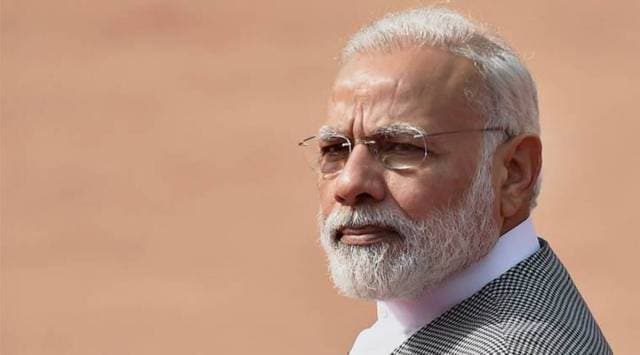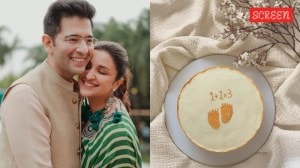Military Digest: Ahead of PM Modi’s France visit, recalling Indian soldiers’ bravery in WW1
This week, ahead of PM Modi’s visit to France, we take a look at the soldiers of the Indian Army who received the highest British Gallantry Award, the Victoria Cross, in the First World War while fighting in France and Belgium.
 Prime Minister Narendra Modi. (File)
Prime Minister Narendra Modi. (File) Prime Minister Narendra Modi will be the chief guest at the Bastille’s Day Parade in Paris, France on July 14. A contingent of the Indian military, comprising troops from the Indian Army’s Punjab Regiment, Indian Navy, and Indian Air Force will also march in the parade along with a band of The Rajputana Rifles.
The Indian Army had fought valiantly in France and Belgium in the First World War.
This week, ahead of PM Modi’s visit to France, we take a look at the soldiers of the Indian Army who received the highest British Gallantry Award, the Victoria Cross, in the First World War while fighting in France and Belgium.
Rifleman Kulbir Thapa
2nd Battalion, 3rd Queen Alexandra’s Own Gurkha Rifles
Born on December 15, 1888, in Nigalpani, Nepal, Thapa died on October 3, 1956.
Citation: Kulbir had been part of a party of soldiers which had fought their way into a German trench despite the odds, but in doing so every other party member had been killed save him. Kulbir, though wounded himself, came across a wounded soldier of the 2nd Leicestershire Regiment and, against the protestations of the British soldier, stayed with the man for the rest of the day and the following night. On the morning of the 26th, under the cover of mist, Kulbir carried the wounded man back out through the German wire and brought him to comparative safety. He then returned and carried out two wounded Gurkhas one after the other. Finally, he returned once more, by this time in broad daylight, to the initial wounded British soldier and brought him to the full safety of the British lines. For the majority of this last trip, he was under enemy fire, and it is said that in at least one instance German fire ceased and was replaced with applause upon seeing Kulbir’s bravery.
Rifleman Gobar Singh Negi
2nd Battalion, 39th Garhwal Rifles
Born on April 21, 1895, in Manjaur village, Tehri Garhwal, Negi died on April 10, 1915, in Neuve Chapelle, France.
Citation: He was awarded Victoria Cross for most conspicuous bravery on March 10, 1915, at Neuve Chapelle. During our attack on the German position he was one of a bayonet party with bombs who entered their main trench, and was the first man to go round each traverse, driving back the enemy until they were eventually forced to surrender. He was killed during this engagement.
Naik N K Darwan Singh Negi
1st Battalion, 39th Garhwal Rifles
Negi was born on March 4, 1883, in Kafaditir Pauri, Badhan, Garhwal, and died on June 24, 1950.
Citation: For great gallantry on the night of the 23rd–24th November, near Festubert France, when the regiment was engaged in retaking and clearing the enemy out of our trenches, and, although wounded in two places in the head, and also in the arm, being one of the first to push round each successive traverse, in the face of severe fire from bombs and rifles at the closest range.
Lt John Smyth
15th Ludhiana Sikhs
Born on October 24, 1893, in Devon, England, Smyth died on April 26, 1983, in Marylebone, London.
Citation: For most conspicuous bravery near Richebourg L’Avoue on 18 May 1915. With a bombing party of 10 men, who voluntarily undertook this duty, he conveyed a supply of 96 bombs to within 20 yards of the enemy’s position over exceptionally dangerous ground, after the attempts of two other parties had failed. Lieutenant Smyth succeeded in taking the bombs to the desired position with the aid of two of his men (the other eight having been killed or wounded), and to effect his purpose he had to swim a stream, being exposed the whole time to howitzer, shrapnel, machine gun and rifle fire.
Lance Dafadar Gobind Singh
28th Light Cavalry attached to 2nd Lancers (Gardner’s Horse) during the First World War.
Singh, who was born on December 7, 1887, at Damoi, Rajasthan, died in 1942. He was awarded Victoria Cross in the Battle of Cambrai.
Citation: For most conspicuous bravery and devotion to duty in thrice volunteering to carry messages between the regiment and Brigade Headquarters, a distance of 1½ miles over open ground which was under the observation and heavy fire of the enemy. He succeeded each time in delivering his message, although on each occasion his horse was shot and he was compelled to finish his journey on foot.
Lt Frank de Pass
34th Prince Albert Victor’s Own Poona Horse
De Pass, who was born on April 26, 1887, died on November 25, 1914, in Festubert, France.
Citation: For conspicuous bravery near Festubert on November 24, in entering a German sap and destroying a traverse in the face of the enemy’s bombs, and for subsequently rescuing, under heavy fire, a wounded man who was lying exposed in the open. Lieutenant de Pass lost his life on this day in a second attempt to capture the aforementioned sap, which had been re-occupied by the enemy.
Lt William Bruce
59th Scinde Rifles (Frontier Force)
Bruce was born on June 15, 1890, in Edinburgh, Scotland and he died on December 19, 1914, in Givenchy, France.
Citation: For most conspicuous bravery and devotion to duty. On the 19th of December 1914, near Givenchy, during a night attack, Lieutenant Bruce was in command of a small party which captured one of the enemy’s trenches. In spite of being severely wounded in the neck, he walked up and down the trench, encouraging his men to hold on against several counter-attacks for some hours until killed. The fire from rifles and bombs was very heavy all day, and it was due to the skilful disposition made, and the example and encouragement shown by Lieutenant Bruce that his men were able to hold out until dusk, when the trench was finally captured by the enemy.
Jemadar Mir Dast
55th Coke’s Rifles (Frontier Force) attached to 57th Wilde’s Rifles (Frontier Force)
Dast was born on December 3, 1874, in Tirah, NWFP, and died on January 19, 1945, in the Peshawar district.
Citation: For most conspicuous bravery and great ability Ypres on April 26, 1915, when he led his platoon with great gallantry during the attack, and afterwards collected various parties of the regiment (when no British officers were left) and kept them under his command until the retirement was ordered. Jemadar Mir Dast subsequently on this day displayed remarkable courage in helping to carry eight British and Indian officers into safety, whilst exposed to very heavy fire.
Sepoy Khudadad Khan
129th Duke of Connaught’s Own Baluchis
Born on October 20, 1888, at Dab, Chakwal, Punjab, Khan died on March 8, 1971, in Pakistan.
Citation: On 31st October 1914, at Hollebeke, Belgium, a British Officer in charge of the detachment having been wounded, and the other gun put out of action by a shell, Sepoy Khudadad, though himself wounded, remained working his gun until all the other five men of the gun detachment had been killed.







